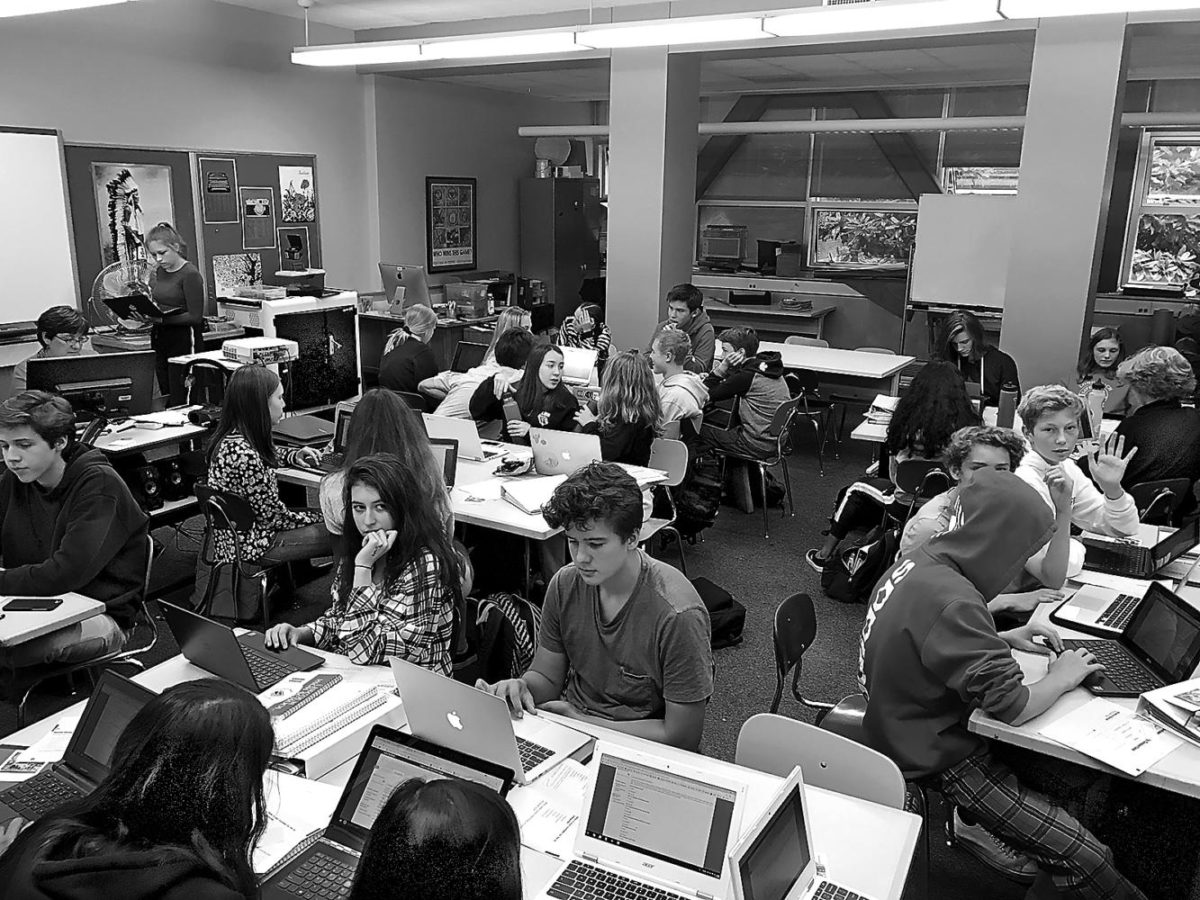Teachers, students agree LHS overcrowding is hurting education
Each year, it’s easy to notice more and more students crowding into Lincoln’s already packed halls and classrooms. But students may not realize that high enrollment without additional space and teachers can hurt their learning experience at LHS.
Numerous teachers have extremely large numbers of students and often teach in classrooms too small to accommodate them.
This includes Oceanography teacher Karen Zwissler. Her 7th period class contains 31 students, in a room which is meant to hold just 28. Zwissler believes the learning environment is affected by a class of this size.
“I have a harder time checking in with each student individually, which I think makes it difficult to build relationships. Specifically in here [room 212], I physically have a hard time getting to students.”
According to Zwissler, desk space may not be available to every student in this class should there come a time when nobody is absent. When asked about possible resolutions to overcrowding, Zwissler said that Lincoln needs to focus on both the short and long term.
She questions the boundary lines separating schools, stating that “some kids go to Lincoln who shouldn’t.” Zwisler is also “flabbergasted by the recent teacher layoffs when the economy was apparently doing well.”
Looking ahead, Zwissler says it is critical to get off on the right foot with Lincoln’s new building. We need to “build for the future population, and not be oversized on day one.”
Senior Charlie Pahl also has problems regarding overcrowded classes. His 7th period Probability and Statistics class contains a total of 40 students. Pahl has noticed the impact this has on classroom learning.
“It’s easier for the class to get sidetracked with so many people [for the teacher] to keep control of. Not to mention, the teacher is responsible for the questions of 40 students. I’m afraid these conditions will cause my class to fall behind.”
In an attempt to accommodate for this lack of space, Pahl’s class has moved from room 71C, their original location, to a larger room in the cafeteria.
Senior Noah Lovgren, who spent last school year studying abroad in Switzerland, recognized differences regarding school systems in the two countries.
“[In Switzerland] kids don’t really have as much liberty in their choice of classes, except for a few electives. But people get ‘tracked’ and can choose when they want to be done with school. Some are done as early as fifteen and start an internship, others go all the way to master programs and are done in their mid-twenties.” Without as much student freedom to choose their schedule, classes are more equally divided because of school board planning, he said.
Lovgren also noticed differences in physical aspects of class environment. “All the [school] buildings [in Switzerland] are wonderfully built, and classes have at most twenty kids.”
This year at Lincoln, Lovgren is in a combined class of German 7-8/9-10. This class is seating 3-4 students to a single desk. According to Lovgren, these desks are only meant to seat two people. Like other students, Lovgren also notices effects of a large class. “It makes it harder for the teacher to talk to everyone. Also, the room gets really hot and uncomfortable.”
Students and teachers are speaking out against overcrowded classrooms. Until this issue is resolved, they will continue to suffer the downsides of congestion.

